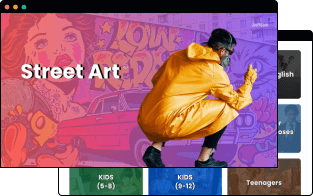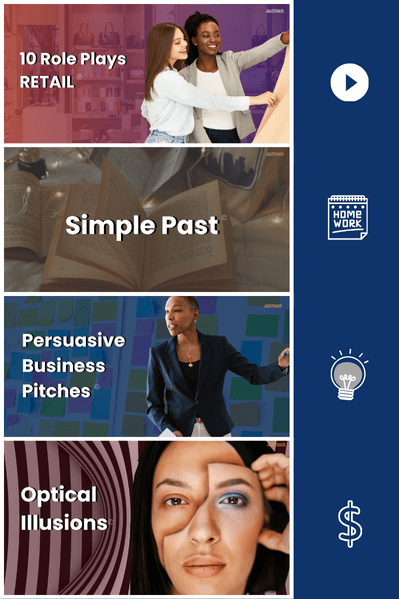If you are a Language Teacher, you may have noticed it’s becoming more common to see students working in marketing roles. They’re social media managers, media buyers, and even affiliate marketers.
Many of my students want me to teach Business English with a focus just on marketing. So, I’ve begun to call these sessions ‘marketing lessons’ because that’s exactly what they’re looking for. They really want to learn English that they can immediately apply in their marketing work.
I’ve been in marketing myself for years, doing everything from affiliate marketing to video production, so I know a thing or two about what it takes to communicate well in this field.
That’s why I’ve come up with some fun speaking activities to help students get better at both English and marketing at the same time. These activities are great because they make students think, they’re engaging, and let’s be honest, they’re pretty fun too.
5 Speaking activities for Marketing lessons
Activity 1: Guess the Brand
Execution:
- We start by talking about what a brand means, which is more than just its logo or colours. It is about visual identity but it´s also about values, personality, reputation, and consumer sensory perceptions.
- Divide the class into groups, and each group gives clues about a brand without saying its name. They might use a slogan, draw something related to the brand or talk about how the brand makes them feel. Any hint is valid.
- Following the descriptions, the groups try to guess each other´s brand
Example: Once my students used the following drawings to describe a brand:
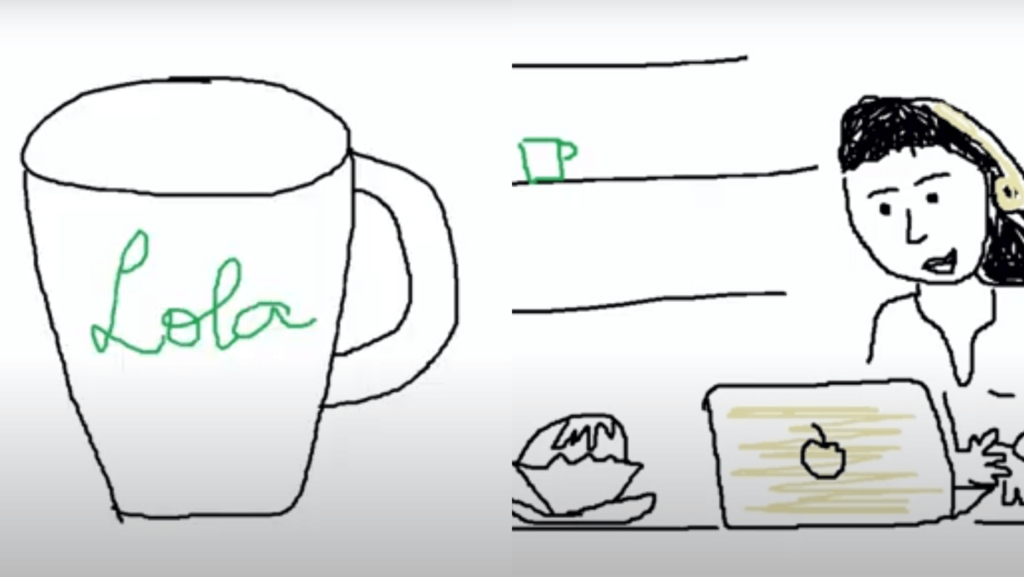
Can you guess which brand they were talking about?
Why I love it ❤️:
- It gets everyone working together and thinking creatively.
- It helps students understand what makes a brand special to people.
- Students can rethink the branding of the company they work for, understanding that branding is not just about visual identity.
Activity 2: Find the Leaders
Execution:
- Students pick an industry and then talk about the top brands in that field.
- We discuss what makes these brands leaders. Is it the quality of their products? Is it more affordable than the competitors?
Example: If talking about the sportswear industry, we might think about talking about Nike, Addidas and Puma.
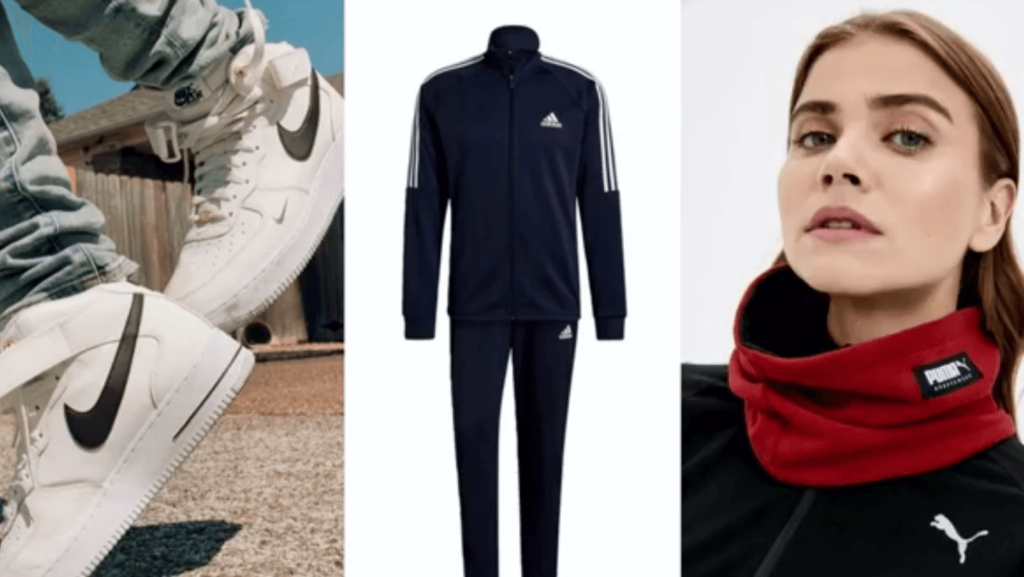
Why I Love It ❤️:
- It sharpens students’ ability to analyze and understand the market.
- It encourages them to express their own ideas about what makes a brand successful.
- It connects classroom learning with the real business world.
Activity 3: Phases of Brand Experience
Execution:
- We look at the whole experience of buying something in three parts: what do we consider before buying, while buying, and after buying.
- We use examples to see how each part affects what people think about a brand.
Example: Thinking about choosing a course at University. What do we have to take into consideration before enroling? Is the University close to where I live? Can I pay for the tuition? During the course, questions may be: are the professors engaging? Am I happy with the materials? And after graduation, questions could be: are they helping me with references for future jobs? Have they given me my certificate?
Why I Love It ❤️:
- It gives a full picture of what it’s like to be a customer.
- It helps students understand things from the customer’s point of view.
- It’s great for thinking about how to attract and retain more customers.
Activity 4: Making Your Brand Stand Out
Execution:
- We brainstorm ideas for making a brand really memorable by doing something special for customers.
- We discuss real examples of products or services that have made us feel the sense of exclusivity, personalisation and how this impacted our perception.
Example: A simple soda bottle with your name on it can make you – as a customer- feel more special and buy more of the product (to share with friends and family).
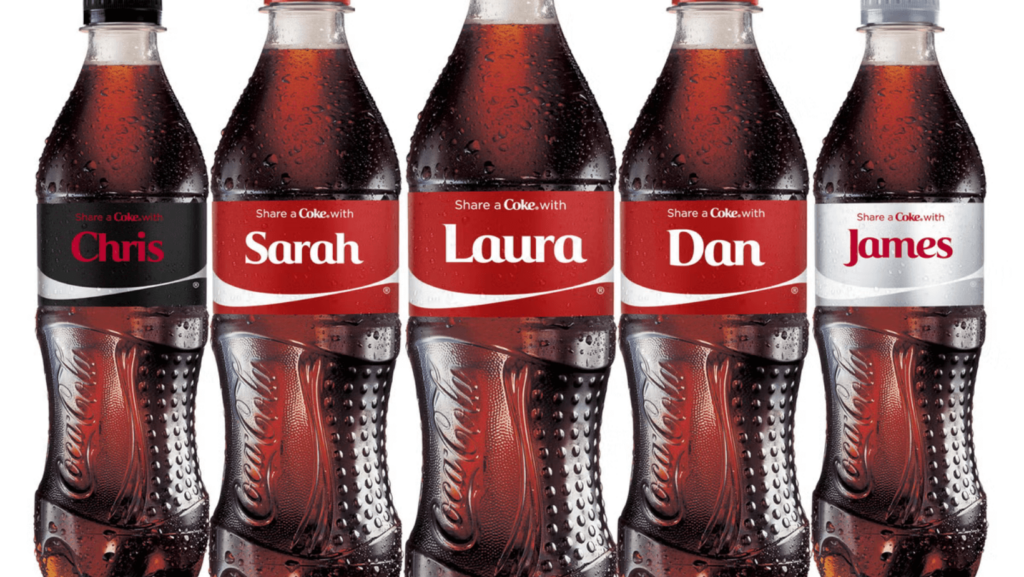
Why I Love It ❤️:
- It gets students thinking outside the box.
- It shows how important it is to connect with customers.
- It show that small actions can bring big results.
Activity 5: Brand Ambassador Analysis
Execution:
- We talk about how having a famous person represent a brand can make the brand seem better (or worse if the choice is not correct)
- We discuss different ambassadors and whether they’re a good fit for the brand they represent.
- We try to choose a perfect Brand Ambassador for the companies students work for.
Example: Talking about the reasons why Tag Heuer chose Cristiano Ronald as their Brand Ambassador. What qualities make him fit the company´s values?

Why I Love It ❤️:
- It shows how important it is for a brand to have the right face.
- It gets students to think critically about brands and their images.
- It keeps students up-to-date with marketing strategies.
They work for General Lessons too!
These activities aren’t just for students interested in marketing. They’re great for anyone who wants to think more deeply, have fun, and learn English that they can use in the real world. If you like these ideas, let me know, and I’ll share more.
*Inspired by the video: Speaking Activities ESL for Marketing Students

